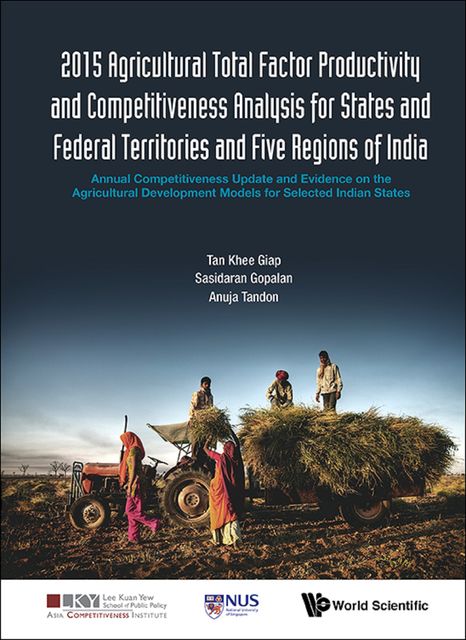We use cookies to improve the Bookmate website experience and our recommendations.
To learn more, please read our Cookie Policy.
To learn more, please read our Cookie Policy.
Accept All Cookies
Cookie Settings

Read in our apps:
iOS
·Android
Khee Giap Tan,Sasidaran Gopalan,Anuja Tandon
2015 Agricultural Total Factor Productivity and Competitiveness Analysis for States and Federal Territories and Five Regions of India
Notify me when the book’s added
Impression
Add to shelf
Already read
Report an error in the book
Share
Facebook
Twitter
Copy link
To read this book, upload an EPUB or FB2 file to Bookmate. How do I upload a book?
This book by the Asia Competitiveness Institute (ACI) undertakes rigorous empirical research relating to competitiveness of states and federal territories in India. The competitiveness framework employed by ACI computes the rankings for the 35 states and federal territories of India by factoring in a plethora of socio-economic development indicators that determine competitiveness. In this book, ACI's competitiveness analysis employs 75 different indicators across four different environments to capture the dynamics of competitiveness in a holistic way at the sub-national level. Further, the book produces a 'What-If' competitiveness simulation exercise to identify the specific policy areas that each state or federal territory must focus on to improve their rankings. Along with competitiveness, the book also presents a comprehensive analysis of issues relating to agricultural productivity at the sub-national level. Specifically, the book discusses the relevance and importance of raising total factor productivity in the agriculture sector in India at the state level and also brings out the extent of intra-state and intra-regional disparities prevalent in the country.
Contents:Introduction;2015 Annual Update on Competitiveness for 35 States and Federal Territories of India;2015 Annual Update on Competitiveness for Five Regions of India;How Productive Is the Agricultural Sector across Indian States?;Agricultural Growth Models of Gujarat and Bihar: A Comparative Analysis;Concluding Remarks and Directions for Future Research;Readership: Academics, undergraduate and graduates students, professionals interested in India's economic development.Competitiveness, India, Agricultural Productivity, Total Factor Productivity, State Rankings, Malmquist Index, Gujarat, Bihar, Co-operative Federalism, Sub-national EconomiesThe book undertakes rigorous empirical research relating to the notion of competitiveness at the sub-national level in IndiaIn addition to general issues of competitiveness, the book provides a comprehensive empirical analysis and policy discussion of issues concerning agricultural productivity confronting the various states and federal territoriesIt offers a unique blend of empirical work and policy discussion as it relates to a large emerging market economy like India, specifically factoring in the differences within the country
Contents:Introduction;2015 Annual Update on Competitiveness for 35 States and Federal Territories of India;2015 Annual Update on Competitiveness for Five Regions of India;How Productive Is the Agricultural Sector across Indian States?;Agricultural Growth Models of Gujarat and Bihar: A Comparative Analysis;Concluding Remarks and Directions for Future Research;Readership: Academics, undergraduate and graduates students, professionals interested in India's economic development.Competitiveness, India, Agricultural Productivity, Total Factor Productivity, State Rankings, Malmquist Index, Gujarat, Bihar, Co-operative Federalism, Sub-national EconomiesThe book undertakes rigorous empirical research relating to the notion of competitiveness at the sub-national level in IndiaIn addition to general issues of competitiveness, the book provides a comprehensive empirical analysis and policy discussion of issues concerning agricultural productivity confronting the various states and federal territoriesIt offers a unique blend of empirical work and policy discussion as it relates to a large emerging market economy like India, specifically factoring in the differences within the country
more
This book is currently unavailable
306 printed pages
Have you already read it? How did you like it?
👍👎
fb2epub
Drag & drop your files
(not more than 5 at once)

